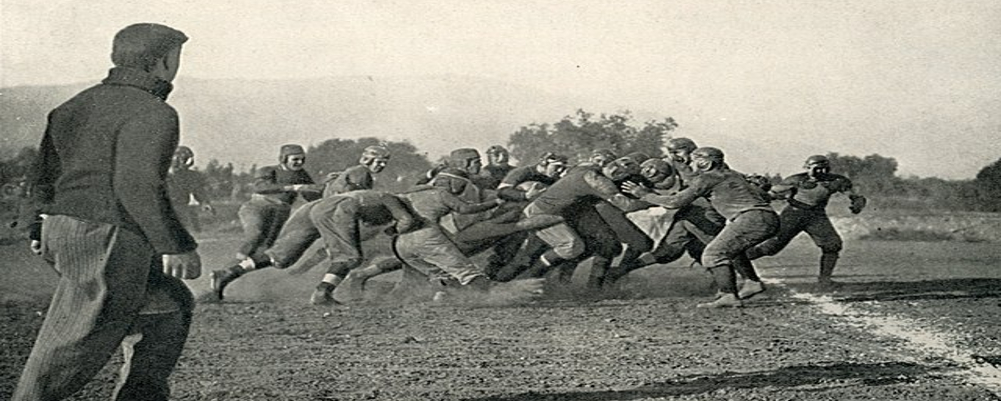Born on August 12, 1984, Bryan Pata was more than just a rising football star—he personified perseverance and hard work. His passion for the game was evident as a child, and by the time he graduated from high school, he was well-known as a formidable opponent. But Bryan was more than tackles and scores; he was a complex person with a passionate interest in the outside world.
Pata's gridiron journey through high school football started in North Miami and lasted three years before culminating in a standout season at Miami Central. His exceptional talent wasn't just noticed; it was celebrated. Super Prep Magazine named him to their All-America team and ranked him among the nation's elite defensive linemen at number 26.
When Bryan was a college student at the University of Miami, he skillfully combined his love of football with his academic interest. He was studying the complexities of crime and justice off the field, not just chasing tackles while majoring in criminology.
The Miami Hurricanes' towering defensive lineman was a force of nature. From 2003 to 2006, he carved his name into the heart of "The U" with relentless power and infectious exuberance. His 6'4", 280-pound frame housed a warrior's spirit, racking up 23 starts and terrorizing opposing quarterbacks.
Pata's journey wasn't just about sacks and tackles. He embodied the immigrant dream, a first-generation American whose parents arrived from Haiti. This young man found strength, purpose, and common ground with his peers on the gridiron. His story resonated with Miami's diverse community, symbolizing triumph over adversity. Pata's infectious energy and leadership made him a beacon for his teammates on the field, his booming laugh echoing through the locker room.
Bryan's story came to symbolize the notion that absolute brilliance exists outside the confines of a sports field. It's about seizing every chance for development and leaving a lasting impression outside the game.
But tragedy unfolded on November 7, 2006, marking an irreversible turning point in Bryan's promising life. After a routine football practice, Bryan returned to his apartment in Kendall, Florida, just like any other evening. However, as he approached his residence's familiar surroundings, the night's tranquility was shattered soon after he stepped out of his car.
In a heart-wrenching turn of events, Bryan was found fatally shot in the head in the parking lot of the Miami apartment complex. The once serene community, now forever marked by the echoes of that tragic night, became a backdrop to an event that left the surviving tenants in disbelief.
The news of Bryan Pata's untimely death sent ripples of sorrow not only through the Miami Hurricanes community but throughout the city. The Miami-Dade police swiftly labeled it a homicide. As the years passed, the mystery became a haunting specter, casting shadows over the memories of a young man taken too soon. The community, united in grief, clung to hope for resolution.
Recently, on August 19, 2021, a significant breakthrough occurred. A suspect was charged with what reports described as some tips from citizens, cell phone records, and an eyewitness account. Former teammate Rashaun Jones, now 35, was arrested in Ocala, Florida, and charged with the cold-case murder that had haunted the community for fifteen years. Recent revelations unveiled a complex backstory, suggesting tensions between Bryan and Jones. Allegedly, Pata had previously beaten Jones during a physical altercation, and there were claims that Jones had threatened Pata before the tragic incident, adding a layer of complexity to their relationship.
About two months before the homicide, prosecutors claimed, "Pata had told his brother Edwin that Jones had allegedly threatened to shoot him in the head." The defensive lineman's brother pleaded with him to report the incident, but Pata refused, and he was later found dead of a gunshot wound.
The legal procedure proceeded in the following months, looking into the specifics of that fateful night. At the time of the shooting, Jones told investigators he had never left his home that day. However, the district attorney claimed that cell phone records and an eyewitness allegedly placed him near the scene of the crime.
Friends, relatives, and the Miami Hurricanes community were watching intently, hoping this would finally solve years' worth of unanswered questions.
Law experts offered their perspectives, and there was cautious optimism in the community. Everyone acknowledged that the impact of Bryan Pata's loss had left a lasting mark on them, regardless of the outcome of the continuing legal process.
And last, the verdict—a significant moment. The courtroom, which had previously stood for uncertainty, was now the resolution location. The verdict's pronouncement represented more than a legal finality for individuals struggling with uncertainty for a long time.
A community living under a cloud of uncertainty for over a decade was relieved when the legal process ended. Closure began with the arrest and the trial that followed, providing some measure of resolve.
Memorial services and assemblies evolved into marks of endurance. After closure, the community was allowed to move forward with a revitalized sense of cohesion and a common goal. The community paid tribute to Bryan's legacy through memorial services and dialogues.
OUTRO
As we conclude this poignant journey through the life and legacy of Bryan Sidney Pata, we find solace in the collective strength of a community that endured years of uncertainty. While not erasing the pain, the arrest and legal proceedings provided a step toward closure for those touched by Bryan's story.
Please leave your opinions in the comments at pigskindispatch@gmail.com if you thought this journey was insightful. Your thoughts and anecdotes add to Bryan's memory's colorful tapestry. To ensure that you don't miss a thing as we continue to explore more stories together, please hit the like button, subscribe, and ring the notification bell if you haven't already.




